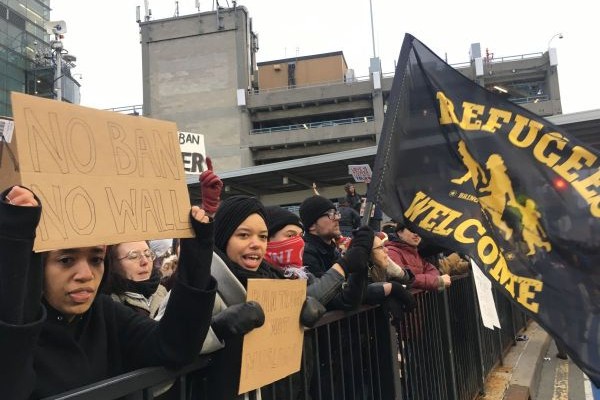HONOLULU, HI — With just a few hours left until the second draft of President Donald Trump’s infamous “travel ban” was scheduled to go into effect Wednesday night, a federal judge in Hawaii issued a temporary restraining order against it, effective nationwide.
U.S. District Judge Derrick Watson issued his decision at noon Hawaii Time, or 6 p.m. Eastern Time.
Trump’s ban would have otherwise become federal policy at one minute after midnight. It would have barred citizens from six Muslim-majority countries — Iran, Yemen, Sudan, Syria, Somalia and Libya — from entering the U.S. for 90 days, unless they could present a valid visa or green card issued before the ban. (Iraq was listed in Trump’s previous draft but was pulled from this one.)
Refugees from all foreign nations, meanwhile, would have been blocked from entering the U.S. for 120 days. Read Trump’s full order here.
The president was holding a rally in Nashville when the Honolulu decision came down. “Let me give you the bad news, the sad news,” he told his supporters. “Moments ago, I learned that a district judge in Hawaii… has just blocked our executive order.”
“The order he blocked,” Trump explained, “was a watered-down version of the first order that was also blocked by another judge, and should have never been blocked to start with.”
The president called Watson’s ruling “an unprecedented judicial overreach.” He told rally-goers: “This ruling makes us look weak. Which, by the way, we no longer are. Believe me. Just look at our borders. We’re going to fight this terrible ruling. We’re going to take our case as far as it needs to go, including all the way up to the Supreme Court. We’re going to win. We’re going to keep our citizens safe.”
A previous attempt by Trump in January to curb immigration from nations he sees as terror-prone also failed to hold up in court.
That executive order, a more extreme version of the current one, was halted by federal judges in both Brooklyn and Seattle just one day after the president signed it — but not before creating mass confusion and chaos at airports across the U.S., as Customs and Border Protection agents began detaining immigrants and putting them on planes back to their home countries.
It’s still unclear how many immigrants were detained during the first ban. The federal government handed over a list of 746 names to a Brooklyn judge last month, but attorneys battling the ban in court say the government’s list is almost certainly incomplete. And there’s no telling, they say, how many others have been stranded abroad or derailed in the middle of their visa or refugee approval process, which can take years.
After Trump’s first ban was deemed unconstitutional by multiple federal judges, he went back to the drawing board. His second ban, signed March 6, has the same title as the first: “Protecting the Nation from Foreign Terrorist Entry into the United States.”
Watson’s freeze on the new draft explicitly prohibits “the enforcement of [the ban] in all places, including the United States, at all United States borders and ports of entry, and in the issuance of visas.”
The restraining order will remain in place until the Honolulu court can hold an “expedited hearing” on whether it should be extended, Watson wrote.
Below is a copy of the Hawaii ruling.


Leave a Reply